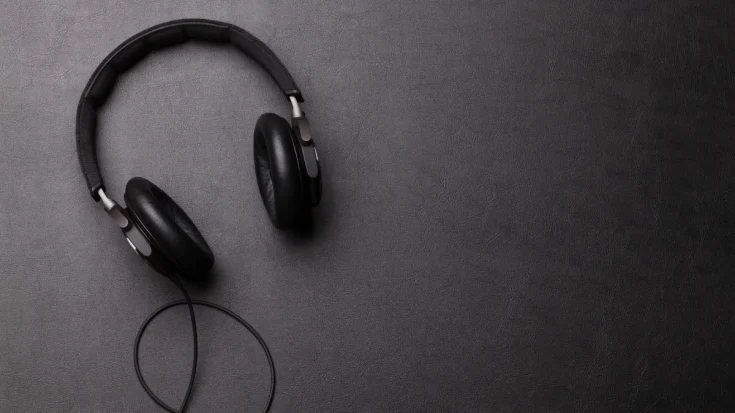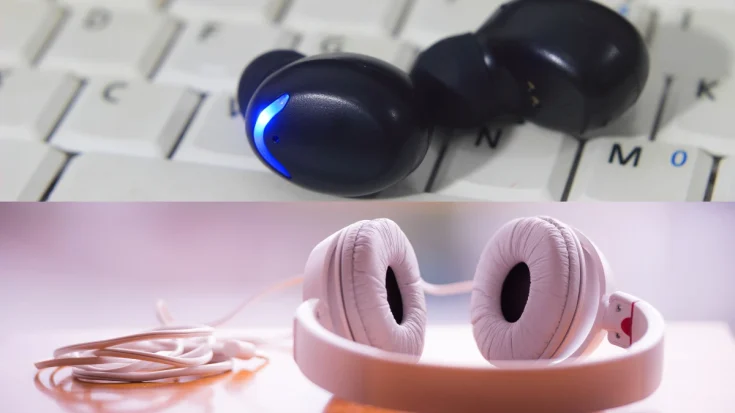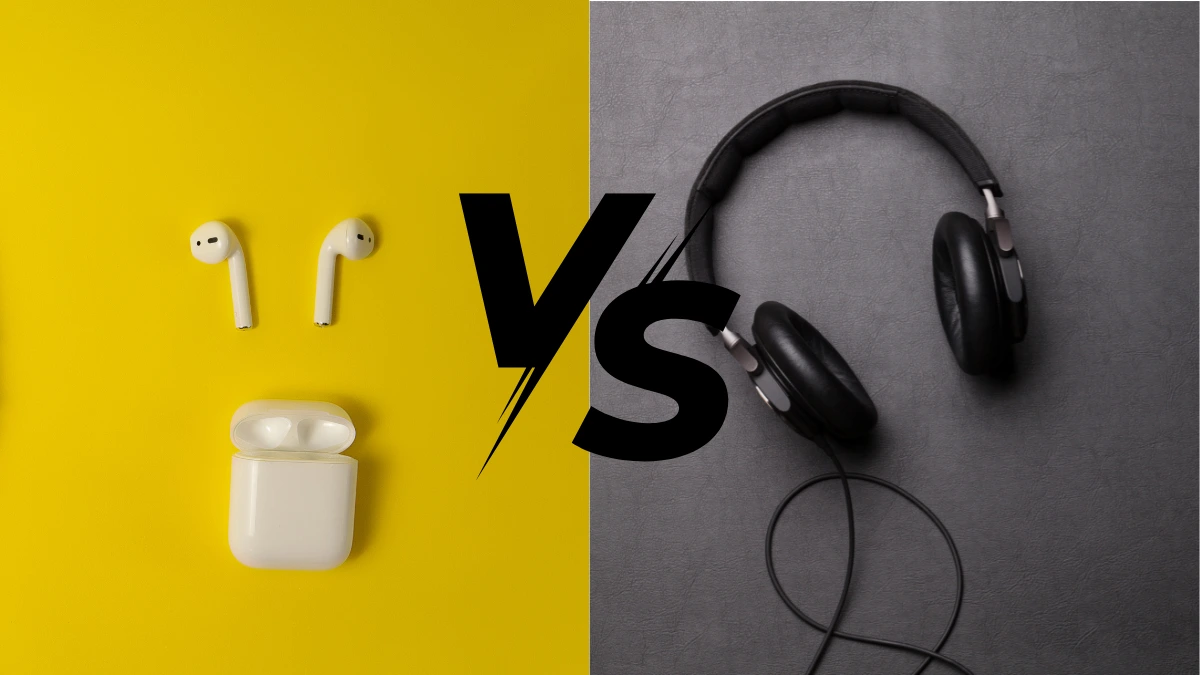True Wireless Stereo (TWS) and headphones are the key to an audio technology that we rely on in our daily use. Although both maximize sound capacity, TWS vs headphones have some significant differences.
The differences between TWS vs headphones cover several aspects such as connectivity, design, audio quality, battery usage, and price.
This article will delve into the important differences between TWS vs headphones to provide a clear understanding of when to utilize each technology.
Also Read
Table of Contents
What is a TWS?

True wireless stereo (TWS) is a wireless audio device that allows wireless use between the two earbuds and a primary device such as a laptop or mobile phone. The TWS connects to the main device using Bluetooth technology that transmits sound directly to the earbuds.
The TWS was first released in 2015, its emergence supported by the periodic removal of 3.5mm audio ports from their devices. It has been loved ever since for its ability to freely listen to audio, take calls, or play games without annoying wires.
What is a Headphone?

Headphones are audio devices that are designed to be placed in the user’s ears for private audio listening. Headphones usually have an over-ear design that provides a more immersive audio experience.
This audio device works by converting electrical signals into sound, which is usually used to listen to music or watch movies. In use, headphones have two models, namely wired or wireless models (with Bluetooth connectivity).
The Difference between TWS vs Headphones

True Wireless Stereo (TWS) and headphones are audio technologies that allow the transmission of sound directly to the device. The main difference between both devices is in the design and how to use it. Here are some of the key differences between TWS vs headphones:
1. Connectivity
TWS: Connects completely wirelessly, either between earbuds or to the playing device.
Headphones: Has two connectivity models, one is wireless, but there is also a wired model that connects directly to the device.
2. Design
TWS: Have a generally smaller and lighter design, making them easy to carry. It has a charging case that facilitates easy charging.
Headphones: Have a larger design as they usually cover all or part of the ear to provide a more immersive audio experience.
3. Audio quality
TWS: Have varying sound quality, usually depending on the price. High-end TWS usually offers excellent sound quality.
Headphones: Better audio quality, especially for wired models because of the direct connection.
4. Battery usage
TWS: It has an embedded battery that can be recharged periodically. Battery life varies from hours to tens of hours per charge.
Headphones: Wireless headphones have a built-in battery that needs to be recharged with battery life varying depending on the model.
5. Price
TWS: More expensive than wired headphones, especially for models with good features and sound quality.
Headphones: A wide range of prices, from affordable to premium, depending on features, quality, and brand. Entry-level wired headphones usually have better audio quality than TWS.
Here are the differences in a nutshell:
| Aspect | TWS | Headphones |
| Connectivity | Completely wireless | Two connectivity models (wired and wireless) |
| Design | Smaller and lighter design | Large design to cover the ear |
| Audio quality | Depending on the price | Better audio quality |
| Battery usage | Varies from hours to tens of hours per charge | Depending on the model |
| Price | More expensive | Has a wide range of prices |
That’s the difference between TWS vs headphones that can be your consideration in choosing the audio technology for daily use. If you need flexibility of use, TWS is a better choice. However, if you need more immersive audio, headphones are more suitable.


















